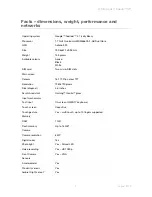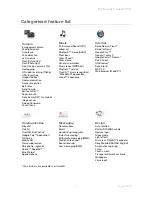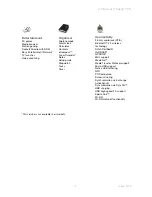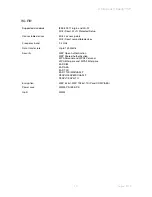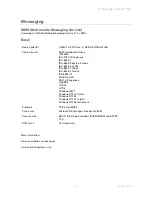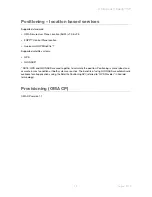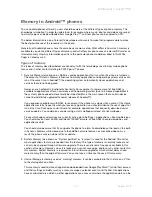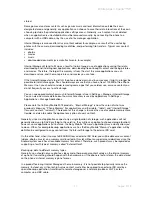
White paper | Xperia™ SP
17
August 2013
stored.
Some games also stores content such as games music and level information outside their own
designated area; and generally, any application can choose to save their data in locations of their own
choosing (outside the protected application settings areas). Generally, such content is not deleted
when an application is uninstalled but must be removed manually, by connecting the phone to a
computer with a USB cable, or by the use of a file manager application.
Internal Storage is also used for all user content added, for example, as a result of the user taking
photos with the camera, downloading media files, and performing file transfers. Typical user content
includes:
• photos
• movies
• music
• downloaded documents (as email attachments, for example)
Internal Storage will tend to fill up as a result of normal usage: use of applications saving their data,
downloading and installing new applications, downloading free or bought content and taking pictures
and movies. Therefore, the larger this memory is from the start, the more applications you can
download and use, and the more pictures and movies you can take.
If the Internal Storage starts to get full, the phone slows down, and in some cases it might no longer be
possible to install more apps. You should always ensure that you have at least 100 MB of free Phone
Memory. If not, you should consider removing some apps that you seldom use, or move content you
do not frequently access to safe storage.
You can see approximately how much Internal Storage is free in Settings > Storage >Internal Storage.
You can also view more detail about how much memory is used by applications in Settings >
Applications > Manage Applications.
Please note that in Sony Mobile 2013 products, “Internal Storage” is now the union of what was
previously known as “Phone Memory” (for applications and their data. “/data”) and “Internal Storage”
(for user’s content, “/sdcard”). The reason for this change is to make the use of available memory more
flexible, and also to enable the optional encryption of user’s content.
Generally, since most applications expect only a single location of storage, such applications will not
generally allow you to SAVE anything to the card (i.e. they will lack an option to choose storage location);
however, some applications (for instance, the Sony Mobile “Camera” application) may actually allow you
to do so. Other, for example backup applications such as the Sony Mobile “Memory” application, will by
definition be configured to copy content from the Internal Storage to the external SD card.
On the other hand, when it comes to READING from an external SD Card, you will be able access content
(videos, photos, music) on a memory card inserted in this slot without any special considerations since the
Android system searches all available memory for content. Therefore, such products may be regarded as
supporting a fourth type of memory, called “External Card”.
Backing up data to different memory types
Generally, you should not save photos, videos and other personal content solely on the internal memory
of a phone. If something should happen with the hardware, or if the phone is lost or stolen, the data stored
on the phone’s internal memory is gone forever.
In a product featuring Internal Storage as the main memory, it is not possible to physically remove the
memory. Instead, any critical or high-value content must either be copied to an external SD card by a
special backup application, transferred to remote storage over a network (mobile or Wi-Fi), or to a
computer via a USB cable.



